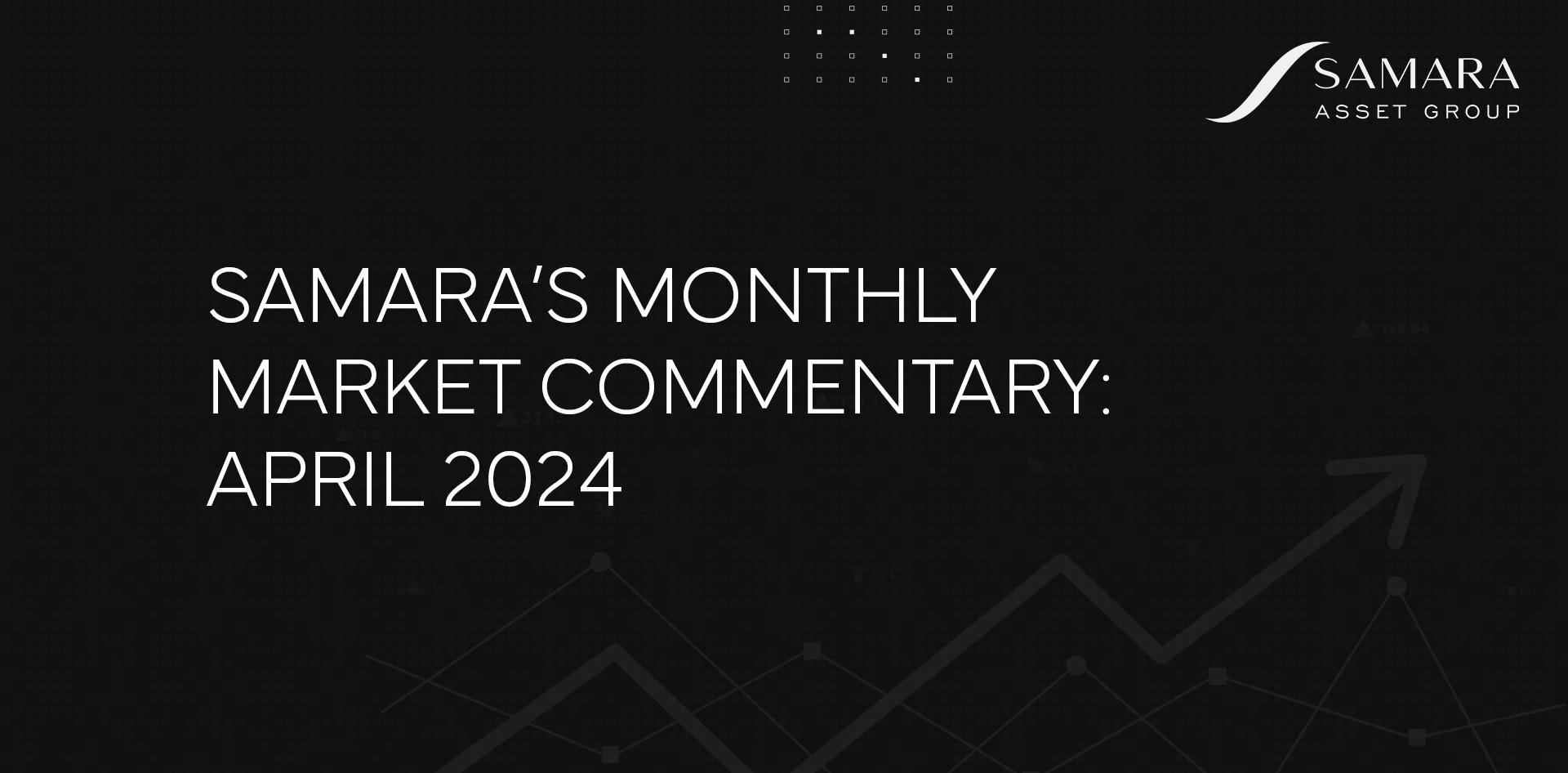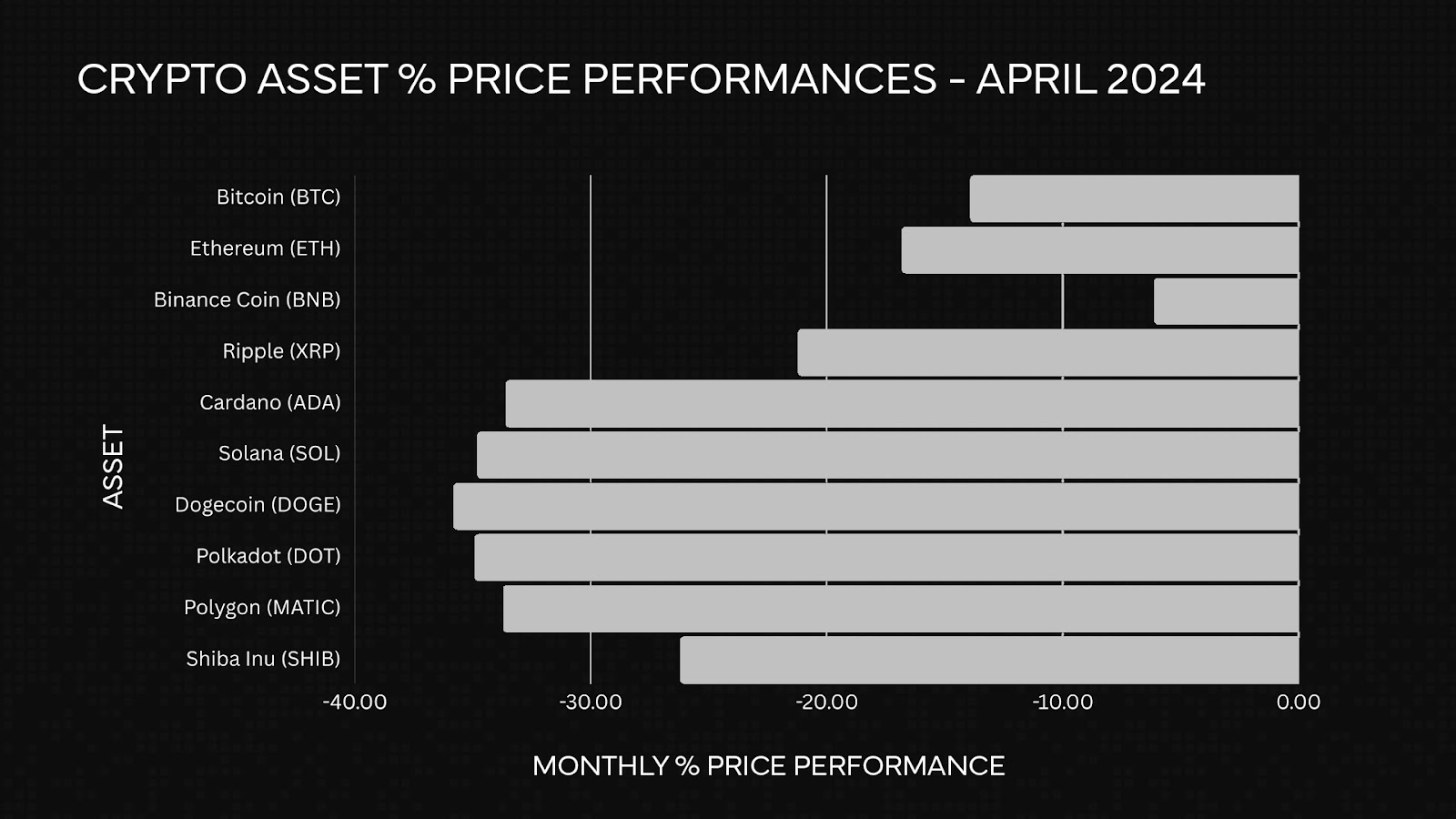Bitcoin
Bitcoin CPI
Venture Portfolio
Funds
Market Insights
Indicators
About
Contact

May 2, 2024





Stay up to date with our monthly market commentary:
The price of Bitcoin (BTC) decreased by 13.1% in April, ending the month at $62,107, recording a month in the red for the first time this year.
While this was Bitcoin's first drawdown in 2024, it continues its impressive start to the year. Next to the launch of spot Bitcoin ETFs, we witnessed this year’s second most anticipated event for the Bitcoin investor community: the Bitcoin halving.
Historically speaking, the halving has always been a key event for Bitcoin miners and investors alike. With the 50% reduction of the block subsidy to 3.125 BTC per block, miners need to rely on higher on-chain transaction fees and a price increase in the future to continue mining.
However, the halving has historically also been a profitable event for Bitcoin HODLers, as the price rallied after each halving, leading to new all-time highs around 12 to 18 months later.
In all previous halvings, we also saw a brief period of price correction shortly after each halving. We need to wait and see if the halving in 2024 will follow the same lead as previous halvings.
Looking at the supply shock ahead - there are now only 450 BTC being mined each day - the potential for a rally in the coming months is there, given the rate at which spot Bitcoin ETF issuers have been buying BTC in recent months.
And now that Bitcoin ETFs have also been launched in Hong Kong, we could see more buying Bitcoin ETF pressure coming out of the Asian markets.
The crypto asset markets closed the month a leg lower, with some of the most popular assets dropping by more than 30%.
Bitcoin (BTC) also saw a drawdown for the first time this year, closing 13.1% lower month-on-month.

For the first time in 2024, Bitcoin recorded a red month, due to reduced inflows into the spot Bitcoin ETFs and investor portfolio rebalancing of risky assets following Iran’s entrance into the war in the Middle East.
Bitcoin’s price correction also affected other crypto assets. Popular altcoins such as Cardano (ADA), Solana (SOL), Polkadot (DOT), and the best performers from last month, Dogecoin (DOGE) and Shiba Inu (SHIB), weren’t able to keep up with their previous months' price increases.
April was overall a correction month for the entire crypto asset market. However, if past Bitcoin halvings are an indicator, we could see a continuance of the bull market in the months ahead.
Bitcoin’s Layer 2 season continues.
However, this month, there was a twist. While we continue to see announcements of new and exciting use cases for scaling Bitcoin, one main event was the launch of the Runes protocol.
Runes allow Bitcoin transactions to etch, mint, and transfer Bitcoin-native fungible tokens on the Bitcoin blockchain. The Runes protocol uses the Bitcoin blockchain and the UTXO model as the foundation for new use cases, such as real-world assets or utility tokens running on Bitcoin.
The emergence of Runes resulted in higher on-chain transaction fees, which miners appreciated as they now have 50% less BTC per block due to the latest halving. Thanks to Runes and other on-chain token protocols, miner revenues didn’t drop substantially after the halving.
Runes are proof that building on Bitcoin is an innovative and exciting part of the Bitcoin community.
April was an eventful month for institutional investors, with the announcement of spot Bitcoin ETFs in Hong Kong and a slowdown of inflows into the U.S. spot Bitcoin ETFs.
News of Hong Kong-based institutions launching spot Bitcoin ETFs was first announced in December last year when the first drafts of the applications with the Hong Kong SFC were created.
Earlier this month, all applications were submitted and, unlike the experience with U.S. regulators, were approved within a week.
Institutions such as China Asset Management, Bosera Capital, Harvest Global Investments, and HashKey Capital Limited were allowed to offer the ETFs to their clients on April 30.
Even though Hong Kong has a close relationship with China, the financial center is treated differently, and the mainland doesn’t officially have access to the financial market. However, it will be interesting to see how high the demand is and how the Hong Kong ETFs perform compared to those issued in the U.S.
Since their launch on January 11, U.S. spot Bitcoin ETFs have been in high demand throughout the first quarter. However, April saw a slowdown in demand, and for the first time since launching, the ETFs didn’t record new daily net inflows.
BlackRock specifically was on a daily net inflow streak of 71 days, before investors stopped buying new shares.
Michael Saylor announced an additional purchase of 122 BTC, bringing the Bitcoin on their balance sheet to 214,400 BTC. MicroStrategy’s continuous buying of Bitcoin as a treasury asset highlights the digital currency’s use case as a cash reserve alternative for corporate treasuries.
In addition to MicroStrategy, Japanese public company Metaplanet announced a pilot project. Metaplanet purchased 1B Yen (around USD 6.25M) worth of BTC. Metaplanet will use Bitcoin as a treasury asset to hedge against the decrease in the purchasing power of the Japanese Yen.
*Closing price data is from April 30, 2024